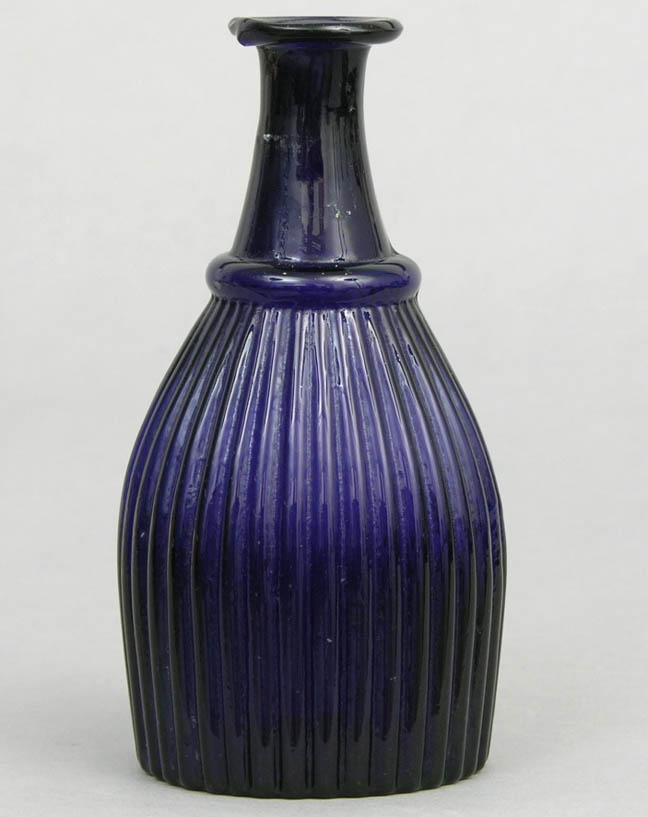

Title: Hand-Blown Cobalt Blue Glass Bottle: 19th Century
Shipping: $29.00
Artist: N/A
Period: Unassigned
History: N/A
Origin: N/A
Condition: Museum Quality
Item Date: 1830 to 1890
Item ID: 1533
19th Century Mold-Blown Cobalt Glass Vinegar Bottle A 19th century American mold-blown deep cobalt blue glass vinegar bottle, approx. 5-1/2"H , with a ribbed body, circular detail at the collar, and a flaring lip. Condition: The feature seen at the lip is a manufacturing flaw, not a damage. There would originally have been a stopper, now missing. The intense blue of cobalt glassware has appealed to artisans for thousands of years. Examples have been discovered in Mesopotamia that date from 2000 B.C. In ancient times, the cobalt glass was used to craft beads and vessels. Centuries ago it became an important element in stained glass windows. During the Victorian Era in the 1880s, the glass was used to produce decorative items that were displayed in households. These pieces are sought after by many collectors.
Link: http://en.wikipedia.org/wiki/Bottle
The bottle has developed over millennia of use, with some of the earliest examples appearing in China, Phoenicia, Rome and Crete. The Chinese used bottles to store liquids. In modern times for some bottles a legally mandated deposit is paid, which is refunded after returning the bottle to the retailer. For other glass bottles there is often separate garbage collection for recycling. Since prehistoric times, bottle containers were created from clay or asphaltum sealed woven containers. Early glass bottle manufacture was conducted by the Phoenicians; specimens of Phoenician translucent and transparent glass bottles have been found in Cyprus and Rhodes generally varying in length from three to six inches. These Phoenician examples from the first millennium BC were thought to have been used for perfume. The Romans learned glass-making from the Phoenicians and produced many extant examples of fine glass bottles, mostly relatively small. The glass bottle was an important development in the history of wine, because, when combined with a high-quality stopper such as a cork, it allowed long-term aging of wine. Glass has all qualities required for long-term storage. Soon after its introduction, the bottle became extremely popular with the soft drink and brewing industries mainly in Europe, Asia and Australasia, though some alcohol drinkers disdained the use of the bottle. One etymology of the term codswallop originates from beer sold in Codd bottles. The bottles were regularly produced for many decades, but gradually declined in usage. Since children smashed the bottles to retrieve the marbles, they are relatively rare and have become collector items; particularly in the UK. A cobalt coloured Codd bottle today fetches thousands of British pounds at auction[citation needed]. The Codd-neck design is still used for the Japanese soft drink Ramune and in the Indian drink called Banta.